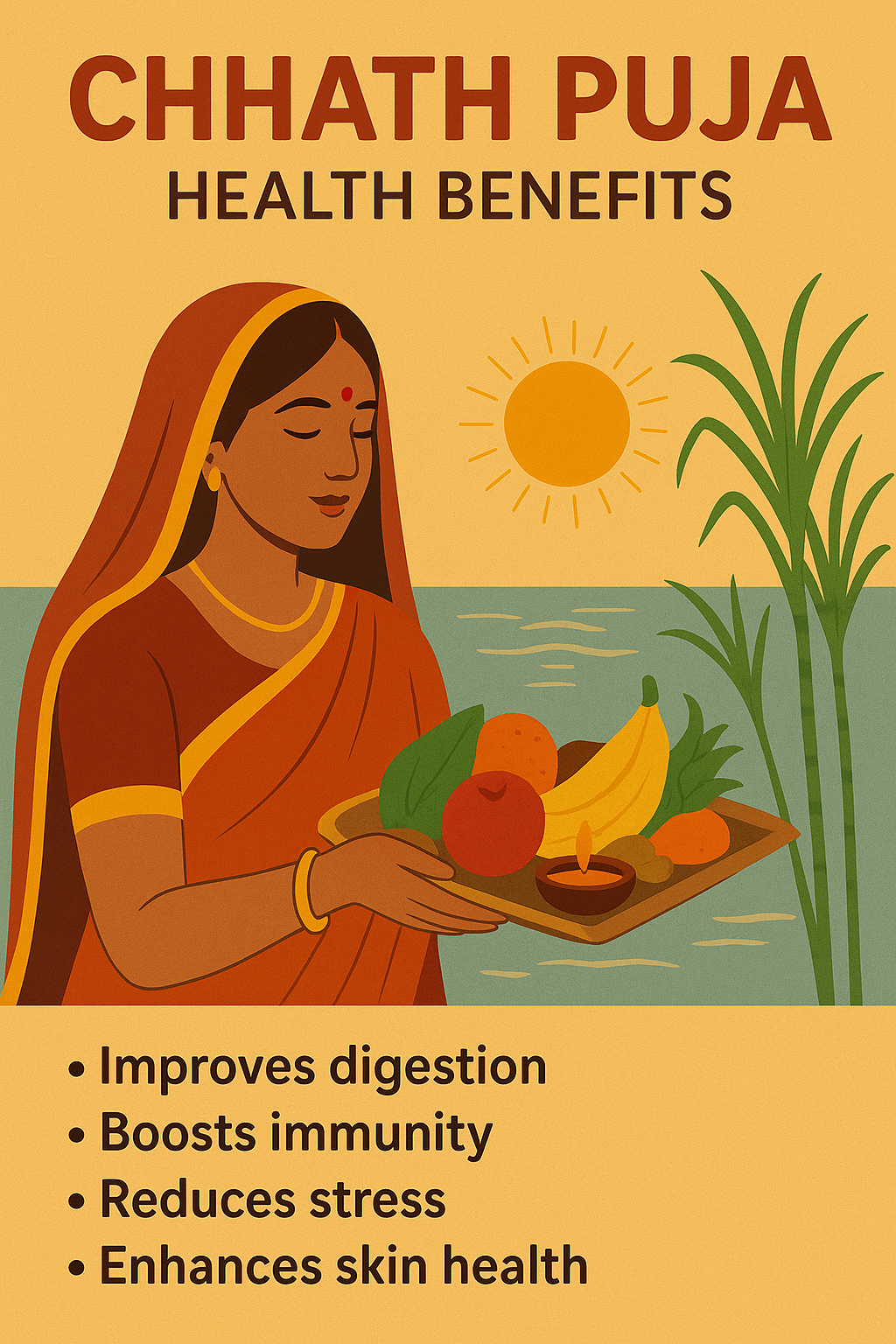
The Chhath Festival Diet: Nourishing the Spirit and the Body
Chhath Puja is more than just a festival — it’s a spiritual journey of purity, gratitude, and discipline. Dedicated to Surya Dev (the Sun God) and Chhathi Maiya, this four-day festival observed mainly in Bihar, Jharkhand, and Uttar Pradesh revolves around devotion, fasting, and natural, sattvic food.
1. The Philosophy Behind the Chhath Diet
The Chhath fast is known for its simplicity and strictness. Devotees consume only pure, home-cooked, and vegetarian food prepared without salt, onions, or garlic. Every step — from sourcing ingredients to cooking — is done with mindfulness and cleanliness, symbolizing the purification of body and soul.
2. Pre-Fast Foods (Nahay Khay)
The festival begins with Nahay Khay, where devotees cleanse themselves and eat a single meal — usually lauki–chana dal with rice, cooked in pure ghee. This light yet nutritious meal helps prepare the digestive system for the upcoming fast.
3. Kharna: The Holy Offering and Meal
On the second day, Kharna is observed with complete fasting from sunrise to sunset. At night, devotees eat gur (jaggery) ki kheer, roti made with ghee, and fruits — all offered first to the Sun God. The combination provides energy and hydration after the day’s fast while keeping the body sattvic and calm.
4. The Main Fasting Days
The next two days are nirjala (waterless) fasts, showing immense self-control. The offerings — thekua, fruits, sugarcane, and rice laddoos — are made to the setting and rising Sun. These foods are rich in carbohydrates and natural sugars, restoring energy post-fast.
5. Health Benefits of the Chhath Diet
- Natural detox: The fasting and clean eating cleanse the digestive system.
- Improved discipline: Following the Chhath rules trains both body and mind in self-restraint.
- Nutrient balance: Jaggery, ghee, and whole grains offer vital minerals and healthy fats.
- Spiritual wellness: The act of gratitude and mindfulness brings emotional balance.
6. A Modern Take on Chhath Diet
While tradition is sacred, you can make small adaptations for health — using organic jaggery, whole wheat flour, and minimal ghee. Hydration before and after fasting is key.
After Chhath Puja (Post-Fast Recovery)
Breaking the fast requires care — the body needs gentle rehydration and nourishment.
What to Eat:
- Warm Water or Herbal Tea: To rehydrate.
- Fruits or Coconut Water: Natural sugars help restore energy.
- Light Meals: Khichdi, vegetable soup, or boiled vegetables.
- Gradually Add Regular Foods: Return to normal meals over 1–2 days.


Tips:
- Avoid heavy, fried, or processed foods immediately after fasting.
- Include curd or buttermilk to soothe the stomach.
- Continue using jaggery and ghee moderately for balanced nutrition.










